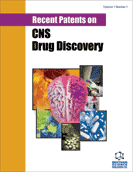Abstract
Background: Owing to the increasing aged population globally, disorders and diseases of the CNS are anticipated to increase and profoundly impact the health care. As these neurodegenerative diseases (NDD) are complex, multifactorial and do not have identified etiological factors, unfortunately, drugs developed for the purpose have not met with the expected success. Hence, there has been a constant demand for the development of natural therapeutic adjuvants which are safe and possess the potential to attenuate multiple pathways.
Methods: Numerous herbal/natural products have been used as therapeutics in Ayurvedic system of medicine to treat NDD and other memory-related disorders. Withania somnifera (Ashwagandha, WS), popularly called as “Indian Ginseng” is one such plant which possesses a variety of beneficial neuropharmacological properties. In this review, we have attempted to review critically the existing literature and patents related to the neuroprotective efficacy of WS roots and the underlying mechanism/s.
Results: Standardized extracts of Withania somnifera (WS) have been demonstrated to possess multidimensional neuromodulatory effects both in vitro and animal models. The spectrum of effects evidenced comprises of attenuation of oxidative damage by enhancing the antioxidant defense system with concomitant enhancement of the expression of marker proteins responsible for growth, differentiation and communication of neural cells. Specific effects of WS are attributable to its potential to modulate neurotrophic factors, cytoskeletal elements, cell adhesion molecules and synaptic proteins.
Conclusion: Generation of new data by employing systematic contemporary approaches such as bioinformatics, molecular docking studies, identification of specific gene targets and epigenetic regulation would provide the necessary impetus to validate fully the neurotherapeutic potential of the phytochemicals derived from WS. More importantly, well-designed clinical trials are required to exploit the neuromodulatory propensity of WS extract/bioactives in specific neurodegenerative diseases such as AD and PD.
Keywords: Withania somnifera, neuroprotection, animal models, clinical trials, patents.
 25
25





















